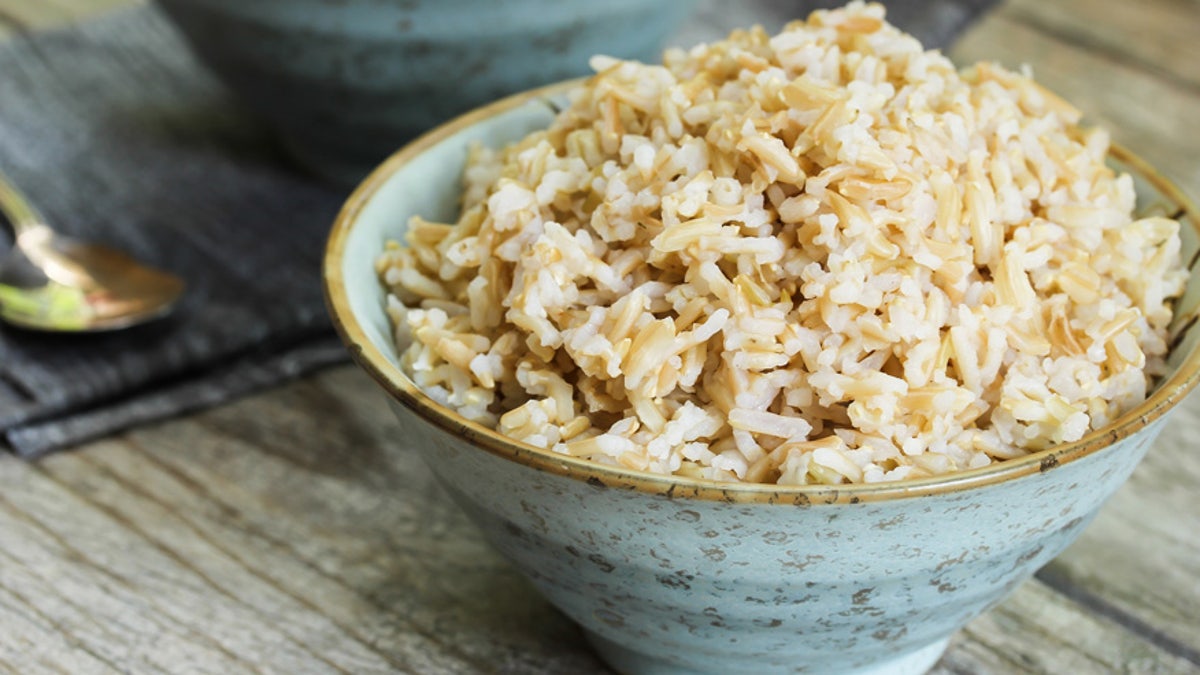
You've been cooking brown rice wrong your whole life. (iStock)
When I was a kid, brown rice felt like punishment. Like the ever-increasing amount of whole wheat flour that would appear in my mom’s pancakes and waffles, brown rice with dinner felt like we had done something really wrong.
My mom would always scorch it, informing us that, in other parts of the world, kids fight over who would get the crispy rice at the bottom of the pot. Charred rice cinders were the one thing my sister and I never felt compelled to fight over.
My mom was right about one thing, though: Brown rice is better. It just took me 15 years to come around.
There are some things, like sushi, that I’ll still choose white for, because its flavor is so unobtrusive. But I actually prefer the nutty intensity of brown rice in stir-fries, grain bowls, and as my go-to grainy side dish. When it comes to how to actually cook brown rice, though, there’s a shocking amount of bad info out there. I want to go out on a limb and assume that you like your brown rice pleasantly al dente, not mushy. Unfortunately, everything from the directions on the bag of rice to your rice cooker are working against you.
If you gave up on brown rice ever being good, you are not alone. We are here to show you the way. These are the three failsafe approaches to making the best brown rice of your life.
Method #1: The Rice Cooker
Say you have one of those fancy rice cookers with a computer chip and a special setting for brown rice. Don’t use it. Cook brown rice on the white rice setting and you'll get better rice in nearly half the time.
In the Bon Appétit test kitchen, our fancy rice cookers have always worked perfectly for white rice. Brown rice, however, tends to come out a bit mushy and overcooked. But, as I recently discovered, if you cook brown rice on the white rice setting, it comes out perfectly, with distinct chewy-tender grains.
I called up Zojirushi, the brand of rice cooker we’ve always sworn by, and spoke with Marilyn Matsuba, their marketing manager. It turns out she’s been hearing this feedback every so often, specifically from users outside Japan. She said that, in Japan, people often prefer their brown rice to be a good bit softer and stickier, while Americans tend to prefer a much firmer grain. She confirmed that, as long as there’s enough water in the rice cooker (i.e., add water to the mark indicated for brown rice inside the cooking pot), cooking it on the white rice setting is perfectly fine.
Side note: You know what that brown rice setting is actually great for? Cooking super-dense whole grains like spelt, rye, einkorn, whole barley and whole farro. We simply mix handfuls of several types that we have on hand and cook them all together.
Method #2: The Fast Stovetop
Do you want the most distinct, perfectly cooked grains possible in half an hour? The best thing about this method is that it's the fastest possible way to cook brown rice, and the amount of water you use doesn’t matter. That’s because we are talking about just boiling the rice like pasta in a pot of salted water until it’s al dente (25-30 minutes), then draining it and returning it to the pot for 10 minutes, covered, to steam out and get even fluffier and drier.
I was very skeptical about this before trying it. It somehow felt like violating the rice to treat it like pasta, but that’s actually how I like to cook quinoa and most other grains, so I don’t know why I would be giving rice special treatment. It creates the most beautifully separated fluffy-tender grains of rice possible, but some of the rice’s flavor does get lost to the boiling water. Chances are you won’t notice.
Method #3: The Standard Stovetop
If you want maximum nutty flavor and don’t mind a slightly longer cook time or pleasantly sticky grains, the standard method is there for you. This is the method that’s on the back of the bag of rice, but probably not the ratio you'll find there. We recommend 1¾ cups water to 1 cup rice. No need to rinse, but salt is essential. Bring the rice to a simmer in a heavy saucepan over medium-high heat, then reduce heat to a simmer and cook, covered, until rice is tender and water has evaporated, about 40–45 minutes. Fluff gently and let sit, covered, for 10 minutes to make it as light and fluffy as possible.
Phew. You made it. Welcome to the world of people who love brown rice.




















